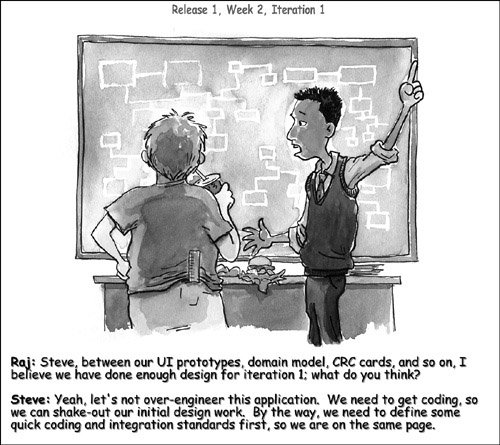Chapter 3. XP and AMDD-Based Architecture and Design Modeling
3. XP and AMDD-Based Architecture and Design Modeling IN THIS CHAPTER, WE FINALLY BEGIN to get into the technology side of things, so now begins the fun part. In a truly iterative development environment, all the architecture and design issues would not necessarily be finalized up front. Refactoring (improving code without impacting its functionality) plays a big role in constant improvement to the initially established design because invariably you will find better ways to do something when you are actually coding. Furthermore, while the scope of the project can be defined up front, the user requirements can continue to evolve from iteration to iteration versus having everything locked-down up front. With requirements, the idea is to have a lot of interaction with the stakeholder and be able to ask ad hoc questions. Although some work can be done up front, such as the user stories, high-level architecture, user interface prototypes, domain model, standards and so on, other design issues can be resolved in the iteration they are applicable to. Furthermore, as we will see in Chapter 5, "Using Hibernate for Persistent Objects," and Chapter 7, "The Spring Web MVC Framework," writing tests first can also help with the design of your classes, so you don't have to have all the fine details of your classes figured out up front; in other words, you can take a just-in-time approach to design, so to speak. However, some upfront design is bound to happen, perhaps in iteration 0 (perhaps when you are trying to demonstrate a proof-of-concept, which shows that the chosen technologies can work end-to-end, from the user interface to the database, for example). Note Also, in iterations 1 and 2, perhaps fewer user stories get coded because of the extra time required for design and environment setup work; this can include a domain model (explained later), definition of business objects, Java naming conventions, build/integration process/scripts for the team, and so on. In this chapter, I hope to provide you with an end-to-end approach using modeling and process guidelines provided by Agile Model Driven Development (AMDD; agilemodeling.com) and Extreme Programming (XP; extremeprogramming.org). |
EAN: 2147483647
Pages: 219
